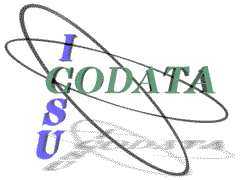Senckenberg Research Institute and Museum, Frankfurt
Botanical Garden and Botanical Museum Berlin-Dahlem
Senckenberg Research Institute and Museum, Frankfurt |
Botanical Garden and Botanical Museum Berlin-Dahlem |
TDWG 2000: Digitising Biological Collections
Taxonomic Databases Working Group, 16th Annual Meeting
Senckenberg Museum, Frankfurt, Germany, November 10-12, 2000
* Department of Mathematics and Computer Science, The University of Massachusetts at Boston
[Computer demonstration]
Although not fully complete, the current XML-Schema proposals under development at the World Wide Web Consortium provide a framework for implementing formal specification of descriptive data in ways addressing the concerns recently discussed in the TDWG-SDD mailing list centred around the proposal of Kevin Thiele for taxon treatments. Existing low-cost commercial tools are now available both for the editing of an XML-Schema and of documents conforming to it -- in this case a taxon treatment. Because XML-Schemas are themselves written in XML, they are easy for both humans and programs to understand. The XSLT language, existing parsers, and extensive Java support for XML applications, provide environments by which XML taxon treatments could be converted to other formats.
We will report on our initial efforts to build a base XML-Schema for treatments and on how it can be extended with XML-Schema inheritance and other mechanisms to treatments required to be subject to further restrictions. We will give simple examples of treatments conforming to the Schema, intended to explore the utility of our approach. Among the problems we discuss is mark-up minimization -- which is greatly resisted by XML but implicit in concise treatments using Thiele's "Collection of Statements" notions. Machine expansion of concise treatments to a normalized, albeit verbose, form ease the building of desirable applications, such as format conversions, display in browsers, the federation of data from multiple data sources, and the enforcement of data circumscription requirements. However, we explore how more traditional XML tree data representations may provide an organization of descriptive data that is both acceptable to authors, easily converted to a flat concise form, and easily used by existing XML tools.
TDWG | Participants | Presentations | Senckenberg Museum | BGBM Biodiversity Informatics
|
This meeting was co-sponsored by the Committee on Data for Science and Technology (CODATA) |
 |
Page editor: W. Berendsohn, wgb@zedat.fu-berlin.de. © BGBM 2000.